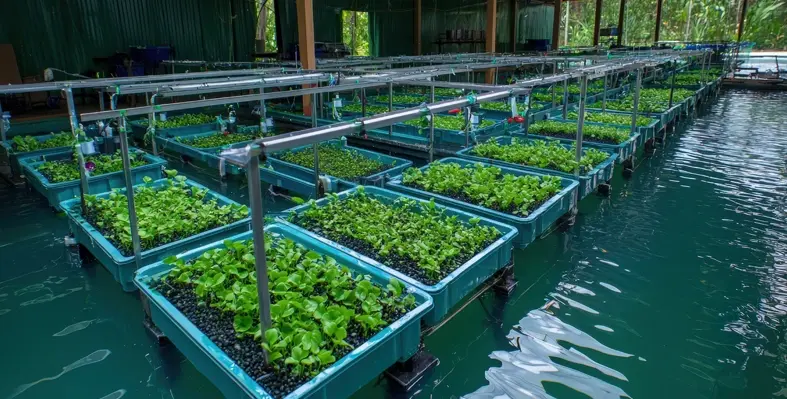While sustainable food production through aquaponic systems is promising, achieving economic sustainability requires the addressing of specific technical challenges, writes Saurabh Maral
Sustainable food production through aquaponic systems is promising. Consegic Business Intelligence analyses that the aquaponics market size is growing with a CAGR of 10.8% during the forecast period (2023-2031), and is projected to be valued at US$2,151.97mn by 2031. The following are the major areas that should be carefully examined for the proper functioning of the systems and to ensure that they are profitable:
Balancing nutrient supply and demand
One of the biggest issues in aquaponics is to make the waste of fish nutrient producers in the same way as plants need it. Fish produce waste as ammonia, which is converted to nitrites and nitrates by bacteria. Besides, plants rely on these compounds to grow, though the unbalance can lead to poor nutrient use or else toxic conditions for fish. A multi-stage biofiltration system will be a successful part of the process of the plant requirements with the desired quality of biofertiliser. Both the bacteria conversion part and the phytoplankton assimilation part from plants should be framed within the biofiltration and recycling of the waste in the closed aquatic ecosystem.
Maintaining water quality
Quality of water is very critical for the well-being of both fish and plants. However, critical parameters such as pH, dissolved oxygen, and temperature should be constantly monitored to prevent any growth issues or mortality in the system. Water monitoring systems that are automated with sensors can provide data in real time and make adjustments as necessary. On the other hand, incorporating machine learning algorithms allows predictive maintenance to take place, thus, reducing the risk of system failure. Additionally, water testing on a regular basis, along with filter maintenance, also plays a huge role in maintaining smooth operation.
Energy efficiency
Aquaponic systems can require a lot of power because of water pumping, aeration, and temperature control. Eroding the profit margin through high energy bills makes energy efficiency a crucial element of sustainability. Energy-conservation equipment such as variable-speed pumps, which are quiet and can be run at different speeds, and high-efficiency aerators can significantly save energy. Besides this, companies can also contribute to absorbing energy costs by employing solar panels and optimising the system design so that water traveling distance would be minimised to lower energy consumption.
Fish and plant species selection
For the aquaponic system to be successful, it is important the appropriate fish and plants are chosen as not all of them are suitable for such kind of systems. The fish that are going to be introduced into the system need to be sturdy because sometimes water conditions can be less than ideal. Also, the plants should get their nutrients from the fish waste. Tilapia, catfish, and trout are the species of fish that are widely used for their robustness, while leafy greens and herbs like lettuces and basil are plants that are particularly recommended. Small-scale trials on different species arrangements will give the combination of plants and fish that will result in the best performance of the system.
Scaling the system economically
The project of upgrading a layer that grows in the system of aquaponics to a commercial level conduces to the augmentation of the complexity in front of high upfront costs, increased production of labour, and more complex system dynamics. The goal of achieving economies of scale without a decrease in the sustainability of the system is of utmost importance. The modular system design helps scale down the size of the farm gradually while at the same time reducing the risks and the initial investment. Automation of the main processes in the life cycle such as feeding, water circulation, and environmental control will minimise labeling work. Data-based tools for analysing the performance of the systems guarantee scalability and constant yield development.
Conclusion
To attain a profitable aquaponic model, it is imperative to deal with main difficulties like nutrient balance, water quality, energy efficiency, species selection, and system scalability. By employing innovative biofiltration systems, automation technologies, power-efficient building components, and data-centric decision support systems, managers will be able to get the most out of the system at the same time as reducing operating expenditures. By means of such approaches, aquaponics promises to be a sustainable food production method that is environmentally friendly and economically sound for the long term.





